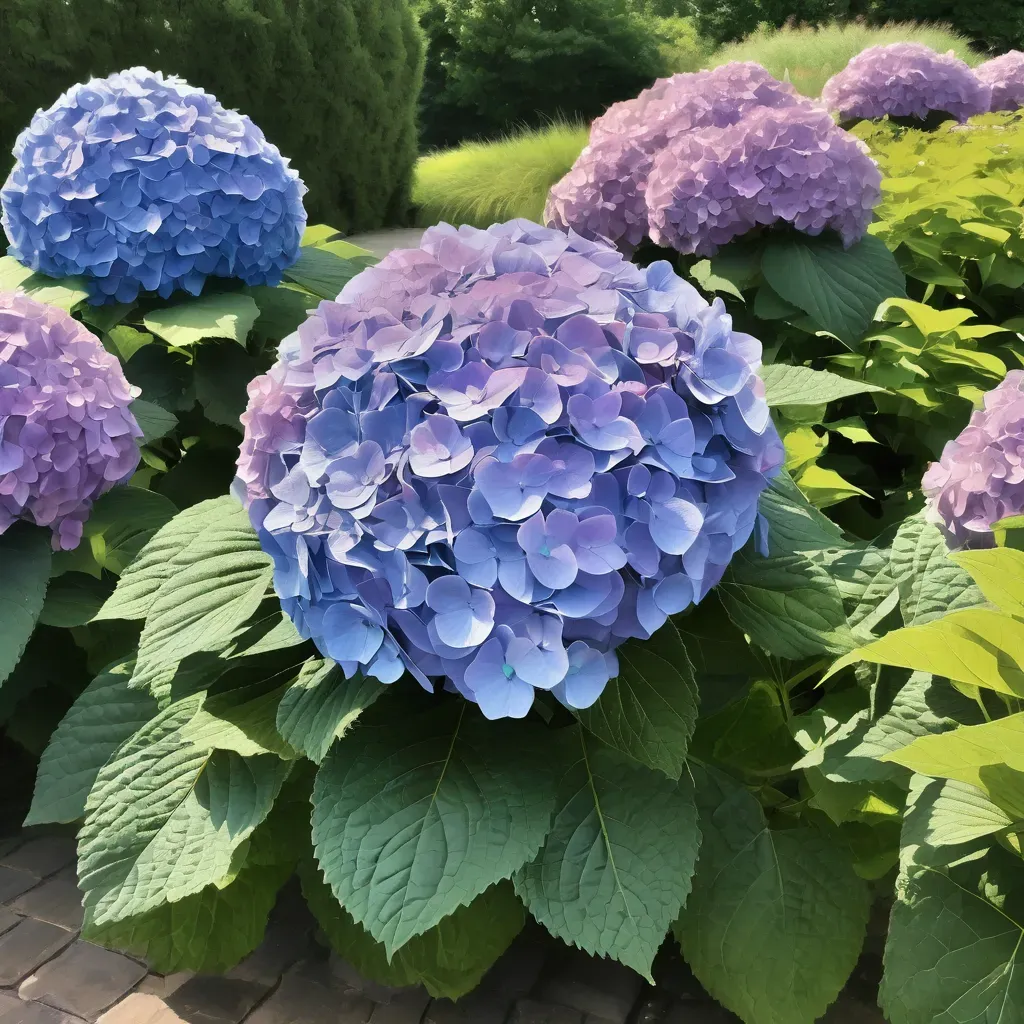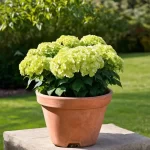Hydrangeas are one of the most enchanting plants that can transform any garden into a colorful paradise. Their huge blooms can captivate anyone who lays eyes on them, making them a favorite for gardeners and homeowners alike. Huge hydrangeas come in various types and colors, providing ample opportunities for vibrant and alluring gardens.
Types of Huge hydrangea
When it comes to huge hydrangeas, there are several varieties that are particularly popular among gardeners:
-
hydrangea macrophylla (Bigleaf Hydrangea): Known for its large, spherical blooms, it flourishes in well-drained, humusy soils. It can grow from 6 to 10 feet tall and wide, making it ideal for creating a stunning focal point in any landscape.
-
Hydrangea paniculata (Panicle Hydrangea): This type is recognized for its large, cone-shaped flower clusters and can reach heights of up to 20 feet. The blooms start white and transition to pink, providing a dynamic landscape throughout the blooming period.
-
Hydrangea quercifolia (Oakleaf Hydrangea): This variant is characterized by its oak-shaped leaves and large flower heads that can grow as impressive as 12 inches long. It provides an outstanding autumn display with its changing foliage.
| Type of Hydrangea | Size | Bloom Type | Color Transition |
|---|---|---|---|
| Hydrangea macrophylla | 6-10 feet | Spherical | Blue/Pink |
| Hydrangea paniculata | Up to 20 feet | Cone-shaped | White to Pink |
| Hydrangea quercifolia | Up to 6 feet | Cone-shaped | White to Pink |
Growing a Huge Hydrangea
Growing a huge hydrangea bush involves selecting the right location, soil type, and care routine. Here are essential factors to consider for the successful growth of huge hydrangeas:
1. Sunlight Requirements
Hydrangeas generally prefer partial shade to full sun. However, the exact needs can vary:
- Bigleaf Hydrangeas thrive in areas with morning sun and afternoon shade, especially in warmer climates.
- Panicle Hydrangeas can handle full sun and are more drought-tolerant than Other types.
2. Soil Conditions
These beautiful flowers prefer rich, well-drained soils with a pH that can vary depending on the type:
- Acidic soils (pH 6.0-6.5) will enhance blue blooms in Bigleaf Hydrangeas.
- Neutral to alkaline soils (pH 7.0+) will yield pink blooms.
3. Watering Needs
Hydrangeas require consistent moisture to thrive. During hot summers, ensure they are watered regularly, especially young plants. A mulch layer of about 2-3 inches can help retain moisture in the soil.
4. Fertilization
Implementing a regular fertilization schedule is crucial. Applying a balanced, slow-release fertilizer in early spring encourages vibrant blooms throughout the growing season.
| Season/Action | Recommendations |
|---|---|
| Spring | Apply balanced fertilizer (10-10-10) |
| Summer | Ensure consistent moisture, especially in high heat |
| Fall/Winter | Light pruning needed; avoid heavy cuts to prevent frost damage |
Common Issues with Huge Hydrangeas
Like any plant, huge hydrangeas can face a variety of issues:
-
Wilting or Drooping: This can stem from underwatering or overwatering. Always assess the soil moisture before watering.
-
Nutrient Deficiency: Yellowing leaves can indicate a lack of nitrogen, usually ameliorated by minor fertilization.
-
Pest Issues: Keep an eye out for pests like aphids and spider mites. Regular inspections and, if necessary, applying insecticidal soap or neem oil can help mitigate these issues.

FAQs about Huge Hydrangeas
1. How big do huge hydrangeas typically grow?
Huge hydrangeas can vary significantly in size depending on their type. Some reach heights up to 20 feet, while others grow between 6 to 10 feet.
2. Can I grow hydrangeas in pots?
Yes, hydrangeas can thrive in pots. Ensure you use a quality potting mix and choose a pot that allows for adequate drainage.
3. What is the best time to prune huge hydrangeas?
The best time to prune depends on the type of hydrangea. For Bigleaf Hydrangeas, prune immediately after blooming to avoid cutting off next year’s flower buds. Panicle Hydrangeas can be pruned in late winter or early spring.
4. Will my hydrangeas bloom every year?
Yes, with proper care, huge hydrangeas typically bloom annually. However, environmental factors and specific care routines can affect blooming success.
5. How can I change the color of my hydrangea blooms?
To change the color of Bigleaf Hydrangeas, you can adjust the soil’s pH. Lowering the pH with sulfur will turn blooms blue, while increasing it with lime will produce pink blooms.
For further insights into Hydrangea Care, you may refer to The Spruce’s guide on growing hydrangeas.

Embracing the beauty of huge hydrangeas not only enriches your garden but also creates an inviting space that is sure to impress anyone visiting your outdoor haven. So, whether you’re a novice gardener or an experienced botanist, cultivating a huge hydrangea bush is a rewarding endeavor that showcases the sheer spectacular nature of these blooms.

